Website Official website | Introduced 1876 (in USA) | |
Alcohol by volume 5%, USA5% Can/Bottle, UK4.3% Draught, UK | ||
Budweiser beer review 90
Budweiser (/bʌdˈwaɪzər/) is an American-style pale lager produced by Anheuser-Busch, currently part of the multinational corporation Anheuser-Busch InBev. Introduced in 1876 by Carl Conrad & Co. of St. Louis, Missouri, it has grown to become one of the highest selling beers in the United States, and is available in over 80 markets worldwide—though, due to a trademark dispute, does not necessarily do so under the Budweiser name. It is made with up to 30% rice in addition to hops and barley malt. Produced in various breweries around the world, Budweiser is a filtered beer available in draft and packaged forms.
Contents
- Budweiser beer review 90
- Beer review budweiser
- Name origin and dispute
- Marketing
- Containers
- Bottle
- Cans
- 2011 can design marketing strategy
- The beer
- Budweiser brands
- Temporarily renamed as America Beer
- International Licensing
- References
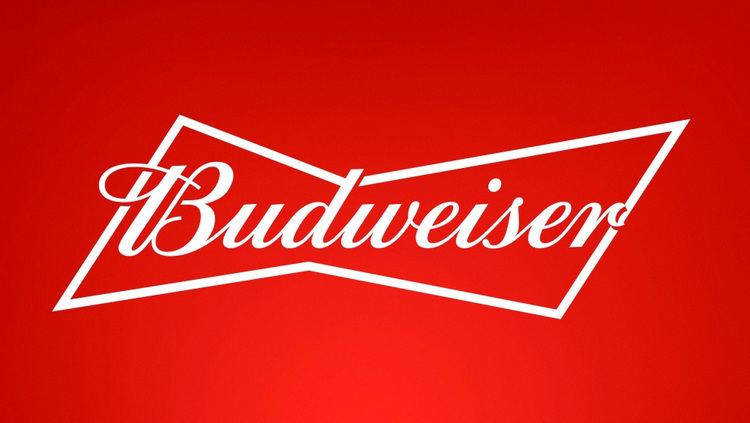
Beer review budweiser
Name origin and dispute
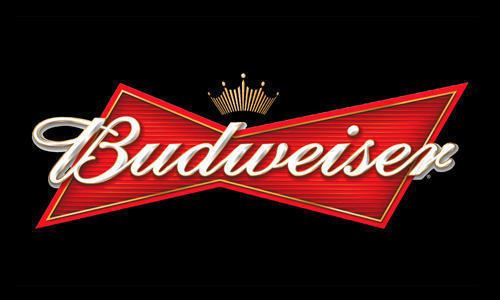
Anheuser–Busch has been involved in a trademark dispute with European beer companies, in particular the Budweiser Budvar Brewery of České Budějovice, Czech Republic, over the trademark rights to the name "Budweiser". Beer has been brewed in České Budějovice (known as Budweis in German) since it was founded by King Ottokar II of Bohemia in 1245. The name Budweiser is a derivative adjective, meaning "of Budweis". In 1876, Adolphus Busch and his friend Carl Conrad, a liquor importer, developed a "Bohemian-style" lager, inspired after a trip to the region.

In the European Union, excluding the United Kingdom, Republic of Ireland, Finland and Spain, the American beer is marketed as Bud, as the Budweiser trademark name is owned solely by the Czech beer maker, Budweiser Budvar.
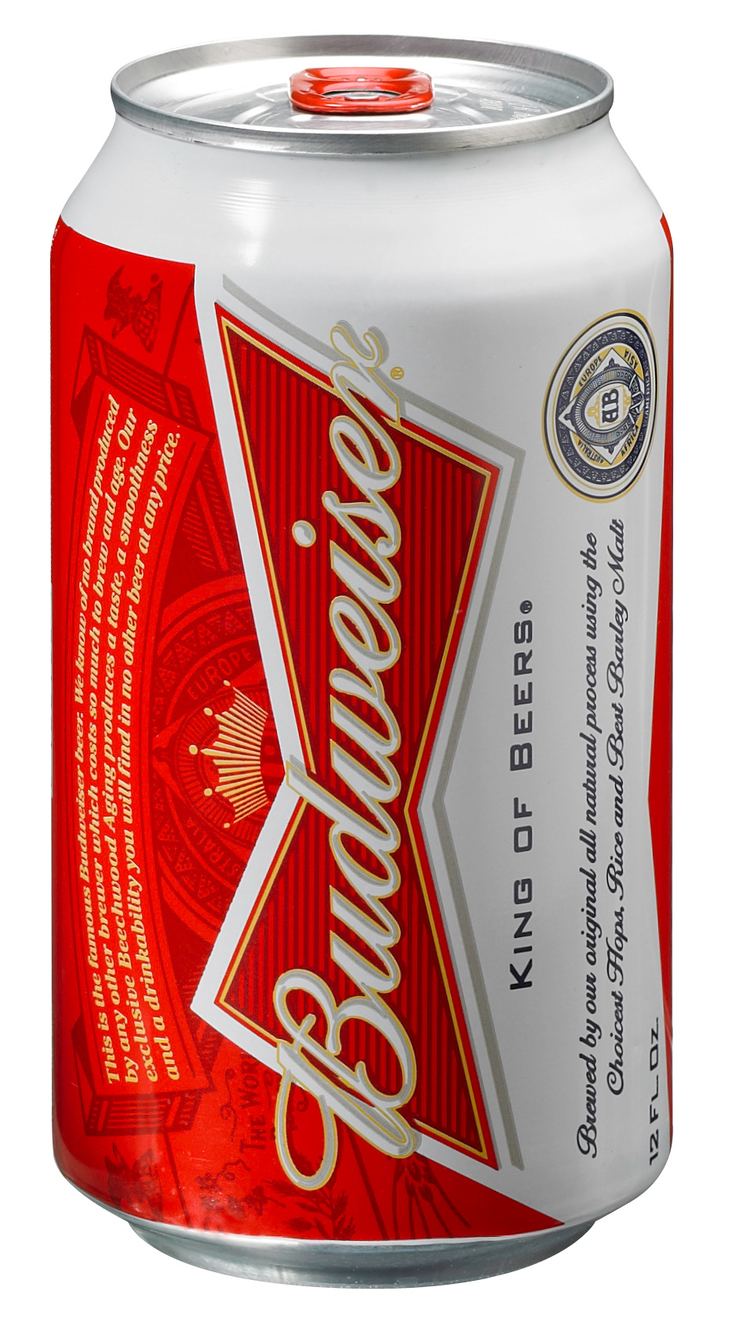
Anheuser-Busch has a market share in the United States of 50.9% for all beers sold. This is primarily composed of Budweiser brands. In 2008, the Belgian-Brazilian beer giant InBev bought the majority of Anheuser-Busch stock at $70 per share in an all-cash agreement, creating the largest brewing company in the world.
Marketing
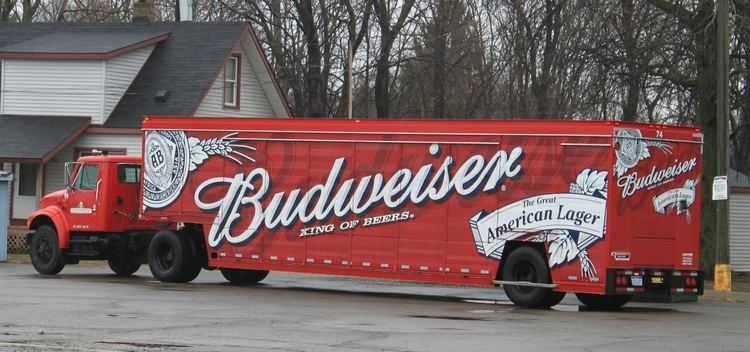
Anheuser-Busch advertises the Budweiser brand heavily, expending $449 million in 2012 in the United States. This made it the most advertised beverage brand in America and accounted for a third of the company's US marketing budget.
The Budweiser from Budějovice has been called "The Beer of Kings" since the 16th century. Adolphus Busch adapted this slogan to "The King Of Beers." This history notwithstanding, Anheuser Busch owns the trademark to both slogans in the United States.
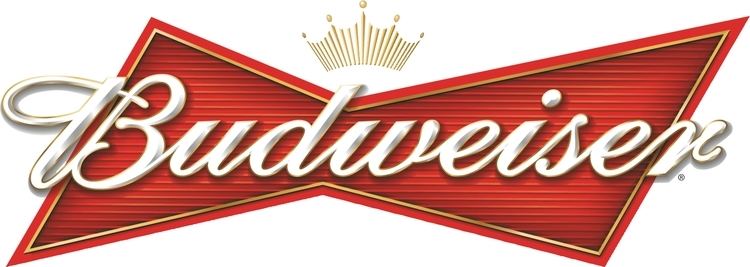
Budweiser has produced a number of TV advertisements, such as the Budweiser Frogs; lizards impersonating the "Bud-weis-er" frogs, a campaign built around the phrase "Whassup?", and a team of Clydesdale horses commonly known as the Budweiser Clydesdales.
The Budweiser brand is promoted in motorsports, from Bernie Little's Miss Budweiser hydroplane boat to sponsorship of the Budweiser King Top Fuel Dragster driven by Brandon Bernstein. Anheuser-Busch has sponsored the CART championship. It is the "Official Beer of NHRA" and it was the "Official Beer of NASCAR" from 1998 to 2007. It has sponsored motorsport events such as the Daytona Speedweeks, Budweiser Shootout, Budweiser Duel, Budweiser Pole Award, Budweiser 500, Budweiser 400, Budweiser 300, Budweiser 250, Budweiser 200, and Carolina Pride / Budweiser 200. However, starting in 2016, the focus of A-B's NASCAR sponsorship became its Busch Beer brand.
Budweiser has been sponsor of NASCAR teams such as Junior Johnson, Hendrick Motorsports, DEI, and Stewart-Haas Racing. Drivers who have sponsored Budweiser include Terry Labonte (1983, 1987–89), Neil Bonnett (1984-1985), Darrell Waltrip (1984-1986), Geoffrey Bodine (1990-1991), Bill Elliott (1992-1994), Ken Schrader (1995-1996); Dale Earnhardt, Jr. (1999-2007); Kasey Kahne (2008-2010), and Kevin Harvick (2011–present). In IndyCar, Budweiser sponsored Mario Andretti (1983-1984), Bobby Rahal (1985-1988), Scott Pruett (1989-1992), Roberto Guerrero (1993), Scott Goodyear (1994), Paul Tracy (1995), Christian Fittipaldi (1996-1997), and Richie Hearn (1998-1999). Andretti was the 1984 IndyCar champion, whereas Rahal won the 1987 championship and the 1986 Indianapolis 500.
Anheuser-Busch has placed Budweiser as an official partner and sponsor of Major League Soccer and Los Angeles Galaxy and was the headline sponsor of the British Basketball League in the 1990s, taking over from rival company Carlsberg. Anheuser-Busch has also placed Budweiser as an official sponsor of the Premier League and the presenting sponsor of the FA Cup. Budweiser was a sponsor and advertiser during the 1996 Atlanta Olympic Games. For the Centennial Summer Olympics, Budweiser produced many commemorative collectibles and souvenirs. A primary Budweiser collectible was a 28-ounce Budweiser Atlanta Olympic Games Beer Stein, which featured the Olympic Flame as a decoration on the stein's handle.
In the early 20th century, the company commissioned a play-on-words song called "Under the Anheuser Bush," which was recorded by several early phonograph companies.
In 2009, Anheuser-Busch partnered with popular Chinese video-sharing site, Tudou.com for a user-generated online video contest. The contest encourages users to suggest ideas that include ants for a Bud TV spot set to run in February 2010 during the Chinese New Year.
In 2010, Budweiser launched an international entertainment property called Bud United. Bud United’s first efforts were centered around the 2010 FIFA World Cup in South Africa. The brand launched an online reality TV series, called Bud House, that followed the lives of 32 international football fans (one representing each nation in the World Cup) living together in a house in South Africa. Bud United’s next project is another reality series called The Big Time; each episode focuses on a different vertical market (baseball, soccer, cooking, etc....) and features contestants competing for a chance to live their dreams. The show was cast through the Bud United Facebook page and aired in Q1 2012.
On November 5, 2012, Anheuser-Busch asked Paramount Pictures to obscure or remove the Budweiser logo from the film Flight (2012), directed by Robert Zemeckis and starring Denzel Washington.
In an advertisement titled "Brewed the Hard Way" that aired during Super Bowl XLIX, large on-screen text stated that Budweiser is "Proudly A Macro Beer" - distinguishing it from smaller production craft beers.
In 2016, Beer Park by Budweiser opened on the Las Vegas Strip.
Containers
Over the years, Budweiser has been distributed in many sizes and containers. Until the early 1950s Budweiser was primarily distributed in three packages: kegs, 12-ounce bottles and quart bottles. Cans were first introduced in 1936, which helped sales to climb. In 1955 August Busch Jr. made a strategic move to expand Budweiser's national brand and distributor presence. Along with this expansion came advances in bottling automation, new bottling materials and more efficient distribution methods. These advances brought to market many new containers and package designs. As of 2011 Budweiser is distributed in four large container volumes: half-barrel (15.5 US gallons), quarter-barrel, 1/6 barrel and beer balls (5.2 gallons); and in smaller 7, 8, 10, 12, 16, 18, 22, 24, 32 and 40 US ounce containers. Smaller containers may be made of glass, aluminum or plastic. On August 3, 2011, Anheuser-Busch announced its twelfth can design since 1936, one which emphasizes the bowtie.
Packages are sometimes tailored to local customs and traditions. In St. Mary's County, Maryland, ten ounce cans are the preferred package. Budweiser drinkers in the western stretches of Ottawa County, Michigan prefer the eight ounce can. This Ottawa County preference for the eight ounce can may stem from a long-standing blue law held in many Western Michigan cities that prohibit sale of beer and wine on Sundays. In response to this blue law, brewers and distributors presented the eight ounce can as a smaller alternative.
Anheuser-Busch has introduced many can designs with co-branding and sports marketing promotional packaging. Today, most of these promotional programs are represented only on the 16 ounce aluminum bottle container. However, many MLB and NFL teams in the United States also promote 24 ounce cans marked with team logos.
Bottle
The Budweiser bottle has remained relatively unchanged since its introduction in 1876. The top label is red and currently reads "Budweiser". The top of the main label is red with a white banner with a pledge on it, which has changed three times. Below the banner is a coat of arms of sorts, which features an Anheuser-Busch stylization. Below that is a large white box.
Cans
During the Prohibition Era, Budweiser encountered its first major obstacle to profit and growth. As alcohol became illegal to sell and produce, all alcohol companies, including Budweiser, struggled to remain profitable. Budweiser began producing non-alcoholic beverages during Prohibition to counter its ill effects. Prohibition began in 1920, and lasted into the middle of the Great Depression in 1933. These are two major setbacks that this company experienced. Just as laws regarding prohibition were repealed, Budweiser was faced with more serious economic struggles, which made their success (like all other companies) very unlikely. In attempt to re-stimulate interest in their beer, Budweiser executed a hugely successful marketing strategy of introducing beer cans for the first time in 1936. This new packaging led to an increase in sales which lasted until the start of World War II in 1939.
Over the years, Budweiser has undergone various design changes to its can which are discussed in the table below. Many of these changes are in response to market conditions and consumer tastes. Since 1936, 12 major can design changes have occurred, not including the temporary special edition designs. The table below describes each of the 12 major can designs.
2011 can design marketing strategy
Traditional Budweiser cans embodied a strong sense of American patriotism. They were red, white, and blue in color, and had images of eagles near the label. These cans also had a very classic appearance due to the cursive font and the Anheuser-Busch logo surrounded by wheat and barley. Red, white, and blue, being the colors of the American flag, identified the cans strongly with the American market for this product. Moreover, the eagles remind viewers of the bald eagle, America's national bird. These facts strongly suggest that Budweiser was targeting a primarily American market. In contrast to this previous design, the newest can takes on a much more modern appearance and eliminates blue as a main color in the design. Red, white, and gold are the predominant colors on this new can, which makes the can look much less traditionally American, and much more modern. On this new can, there are aspects that continue to resonate with an American market, such as the red and white colors, as these are two of the nation's primary colors. The presence of the yellowish-gold color is not typically American, though, and is surprising to see in the can design of the self-proclaimed "Great American Lager."
This change in can design was very shocking for a brand that had remained relatively static since its beginning. The new design was largely in response to the huge sales decline in recent years that is threatening to lose Budweiser its title as the best-selling beer in America. One cause of this sales decline is the unemployment struggles that many Americans have been facing recently. A large group of individuals affected by unemployment are young men, who are the main demographic of Budweiser's target market. In order to regain the domestic market share that Budweiser has lost, the company is trying to update its appearance by giving the can a more contemporary look that is more appealing to this demographic. The company hopes that the new design will offset the effects that unemployment had on its sales.
Although the more modern design is intended for young male Americans, the new design, according to the vice president of Anheuser-Busch Frank Abernante, "is one of many steps in our quest to reinforce Budweiser's role as a truly global beer brand." This statement means that the new design was intended for foreign markets as well. In fact, Budweiser began selling its beer in Russia in 2010, and is currently expanding its operations in China. However, it has not released the new 2011 design can in China as of 2015.
Statistics show that China is the world's leading consumer of beer in terms of volume, which suggests that Budweiser is trying to capitalize on this market's potential in order to recover from these losses. Currently, of the 15 Anheuser-Busch breweries outside of the United States, 14 of them are positioned in China, which shows how interested the company is in this growing market. Budweiser is already the fourth leading brand in the Chinese beer market, and the company hopes that this new design change will push them further up the list as one of China's most dominant brands. Budweiser's attempt to target China is not sudden, though. There have actually been several advertising campaigns geared toward Chinese consumers. One such campaign was in 2009 when Budweiser sponsored a competition for the creation of a Budweiser commercial involving the Budweiser ants. Here, Chinese consumers were prompted to compete in this process of submitting their ideas online for the chance to have their idea become the newest Budweiser commercial.
The beer
Budweiser is brewed using barley malt, rice, water, hops and yeast. It is lagered with beechwood chips in the aging vessel which, according to Anheuser-Busch, creates a smoother taste. While beechwood chips are used in the maturation tank, there is little to no flavor contribution from the wood, mainly because they are boiled in sodium bicarbonate [baking soda] for seven hours for the very purpose of removing any flavor from the wood. The maturation tanks that Anheuser-Busch uses are horizontal and, as such, flocculation of the yeast occurs much more quickly. Anheuser-Busch refers to this process as a secondary fermentation, with the idea being that the chips give the yeast more surface area to rest on. This is also combined with a krausening procedure that re-introduces wort into the chip tank, therefore reactivating the fermentation process. By placing the beechwood chips at the bottom of the tank, the yeast remains in suspension longer, giving it more time to reabsorb and process green beer flavors, such as acetaldehyde and diacetyl, that Anheuser-Busch believes are off-flavors which detract from overall drinkability.
Some drinkers prefer the lightness of beers like Budweiser and consume it as a refreshment or for its inebriating effects. Several beer writers consider it to be bland. The beer is light-bodied with faint sweet notes and negligible bitterness, leading to reviews characterizing it as a "...beer of underwhelming blandness." Even Adolphus Busch disliked the beer he marketed in the United States. But based upon sales alone, it became the second most popular American brewed pale lager among North American beer consumers.
Budweiser and Bud Light are sometimes advertised as vegan beers, in that their ingredients and conditioning do not use animal by-products. Some may object to the inclusion of genetically engineered rice and animal products used in the brewing process. In July 2006, Anheuser-Busch brewed a version of Budweiser with organic rice, for sale in Mexico. It has yet to extend this practice to any other countries.
Anheuser-Busch was one of the few breweries during Prohibition that had the resources and wherewithal to convert to "cereal beer" production—malt beverage made with non-fermentables such as rice and unmalted barley and rye, and able to stay under the 0.5% limit established by the Volstead Act. Following the repeal of Prohibition in 1933, the major breweries continued to use unmalted cereal grains to provide the full body and mouthfeel of a "real" beer while keeping the alcohol content low.
Budweiser brands
In addition to the regular Budweiser, Anheuser-Busch brews several different beers under the Budweiser brand, including Bud Light and Bud Ice.
In July 2010, Anheuser-Busch launched Budweiser 66 in the United Kingdom. Budweiser Brew No.66 has 4% alcohol by volume, and is brewed and distributed in the UK by Inbev UK Limited.
Temporarily renamed as America Beer
On May 10, 2016, Advertising Age reported that the Alcohol and Tobacco Tax and Trade Bureau had approved new Budweiser labels to be used on 12-ounce cans and bottles from May 23 until the November elections. The name "Budweiser" will change to "America" (even though the parent company is based in Belgium, a fact which resulted in objections on Twitter). Further, Co.Design magazine reported that the phrase "King of Beers" will become "E Pluribus Unum", "The World Renowned" will be "Land of the Free", "Anheuser-Busch, Inc." will be updated to "Liberty & Justice For All", "Trademark" becomes "Indivisible", and "Registered" becomes "Since 1776" in relation to the year the United States of America was founded/declared independence (though Budweiser was introduced in 1876).
International Licensing
Budweiser is licensed, produced and distributed in Canada by Labatt Breweries of Canada.
